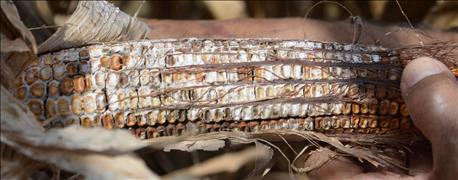Corn With Significant Amount Of Ear Rot Needs Special Storage Measures

By: Tom Bechman
Disease will factor prominently into the story when agronomists summarize the 2016 growing season for corn across the Corn Belt. Especially in the southern half of the Corn Belt, disease reached high levels late in the season. Foliar diseases such as gray leaf spot and southern rust set cornfields up for stalk rots and ear rots. Fields with ear rots pose special problems.
Corn Illustrated 10/17: See what others say about N products
Some farmers in areas where ear rots were spotted near harvesttime say only a small percentage of was grain damaged. Some say they didn’t receive docks when hauling straight to the elevator from the field. Others have reported significant dockage for damaged grain. The damage was often due to diplodia, gibberella or fusarium ear rot, but some kernel rots also appeared this year.
The bigger question comes when you elect to store grain with damaged kernels on the farm. How will it fare in storage? Gary Woodruff, GSI conditioning applications manager, says that depends upon the measures you took before binning the corn, and how you handle it once it’s in storage.
GSI, a division of Agco, issued a press release where Woodruff outlines ways to minimize loss when storing corn with ear rot or kernel rot damage. Here are nine tips to minimize loss.


